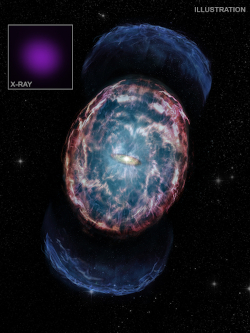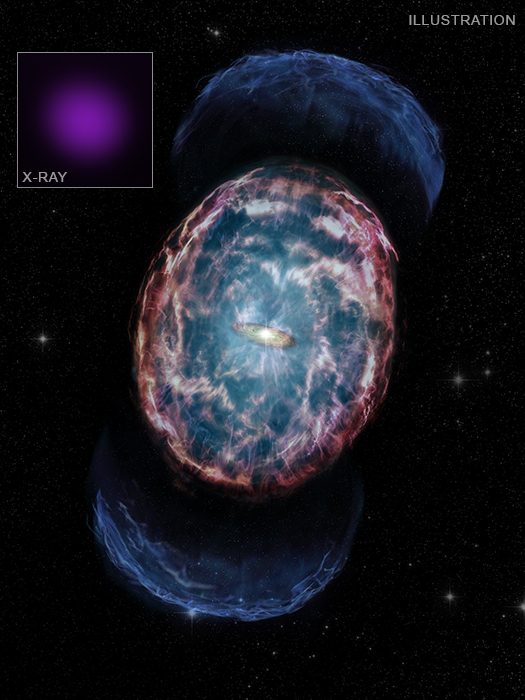An artist’s conception illustrates the aftermath of a "
kilonova," a powerful event that happens when two neutron stars merge. As described in our
press release, NASA’s Chandra X-ray Observatory has been collecting data on the kilonova associated with GW170817 since shortly after it was first detected in gravitational waves by the Laser Interferometry Gravitational-wave Observatory (LIGO) and Virgo on August 17, 2017.
GW170817 was the first — and thus far the only — cosmic event where both gravitational waves and electromagnetic radiation, or
light, were detected. This combination provides scientists with critical information about the physics of
neutron star mergers and related phenomena, using observations at many different parts of the electromagnetic spectrum. Chandra is the only observatory still able to detect light from this extraordinary cosmic collision more than four years after the original event.
Astronomers think that after neutron stars merge, the debris generates visible and infrared light from the decay of radioactive
elements like platinum and gold formed in the debris from the merger. This burst of light is called a kilonova. Indeed, visible light and infrared emission
were detected from GW170817 several hours after the gravitational waves.
Initially the
neutron star merger likely produced a jet of high-energy particles that was not pointed directly at Earth, explaining an initial lack of X-rays seen by Chandra. The jet then slowed down and widened upon impact with surrounding gas and dust. These changes caused an increase in X-rays observed by Chandra followed by a decline in early 2018. However, since the end of 2020, the X-rays detected by Chandra have remained at a nearly constant level. The Chandra image from data taken in December 2020 and January 2021 shows X-ray emission from GW170817 and from the center of its host galaxy,
NGC 4993.
 HEAPOW: Still Basking in the Golden Afterglow (2022 Apr 04)
HEAPOW: Still Basking in the Golden Afterglow (2022 Apr 04)
